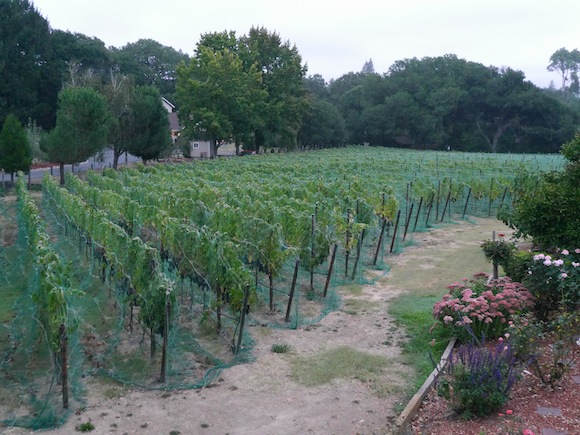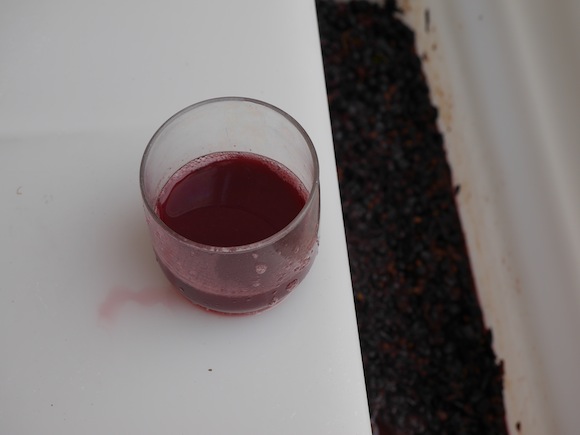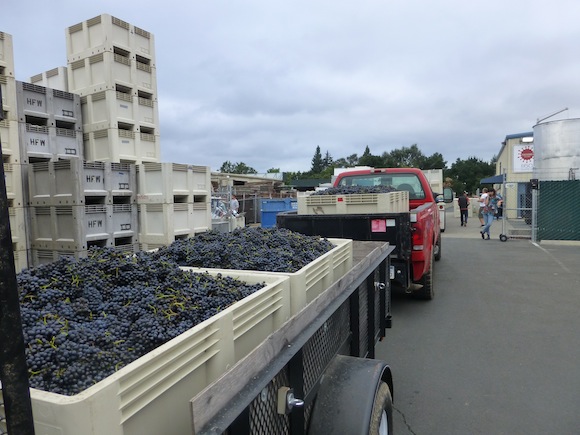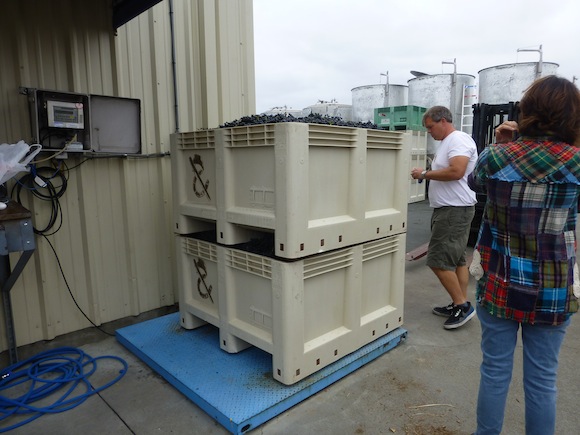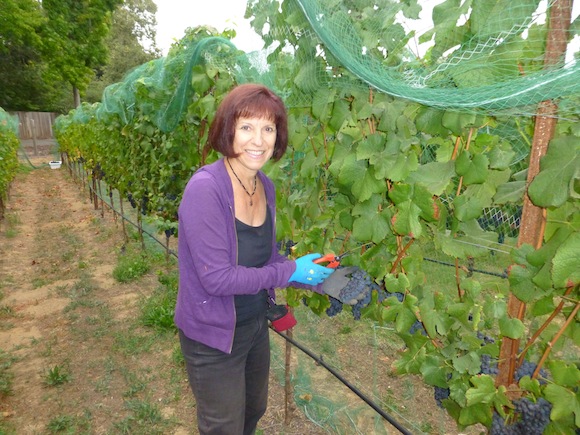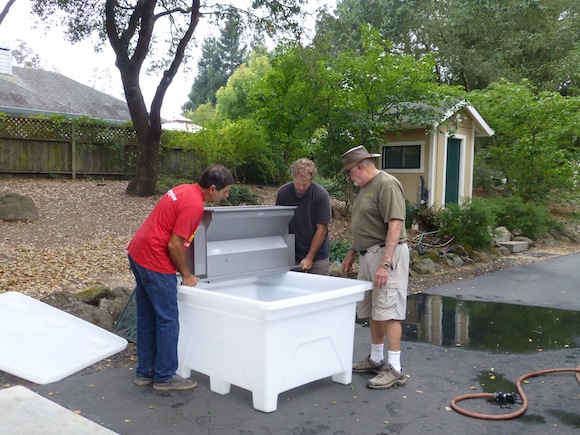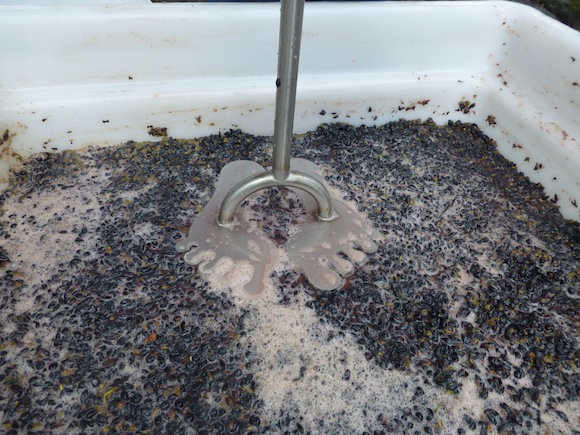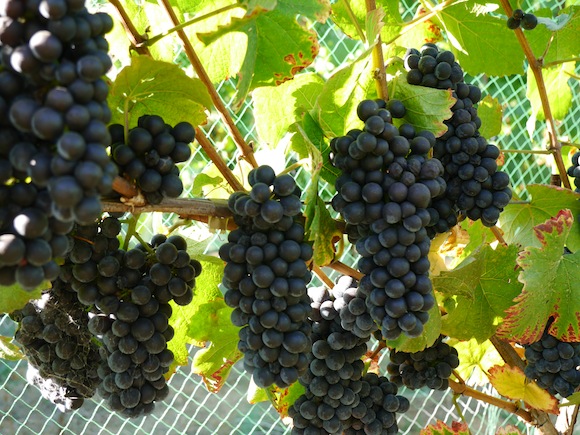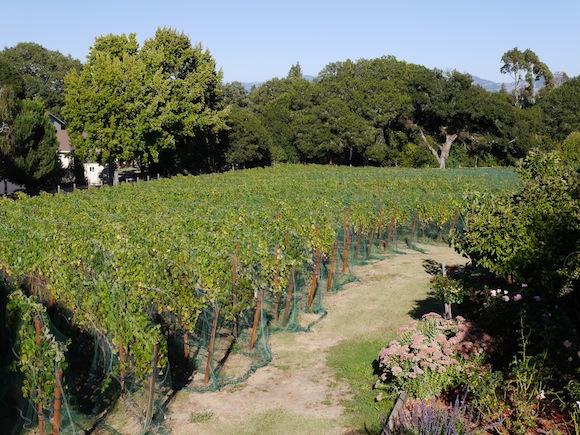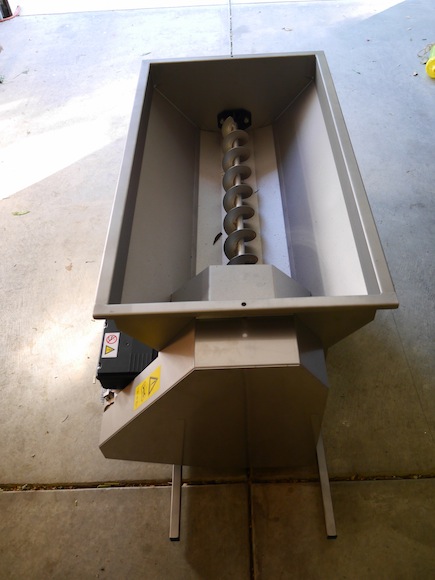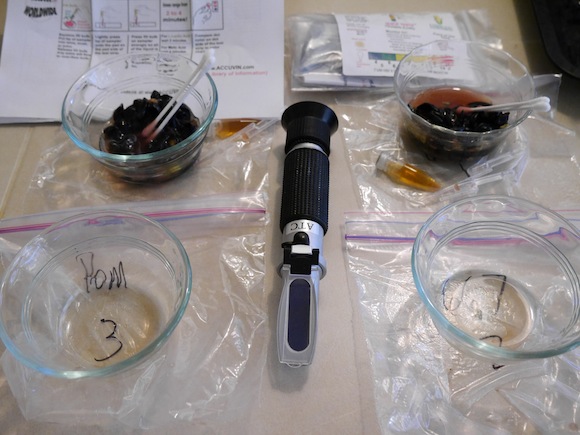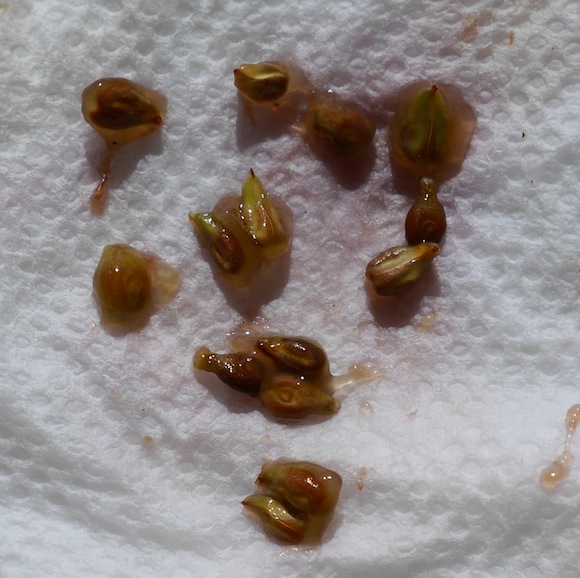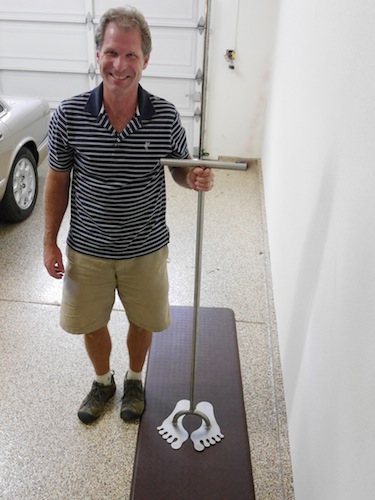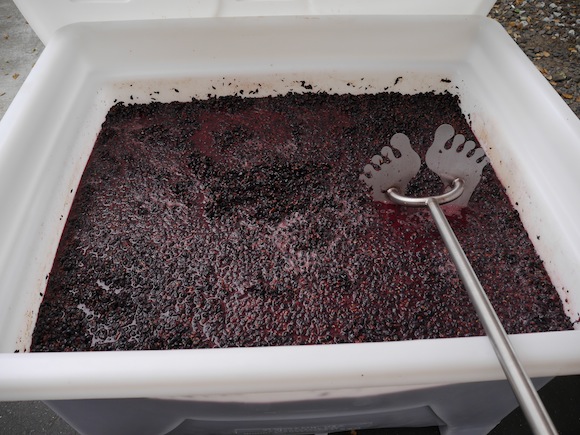
For those interested in making wine…I’m documenting how long it takes to make Pinot Noir and the details of the fermentation. On the bottom, I’ll compare last year to this year…hoping that the changes we made will turn out as planned and increase the complexity of the 2013 wine.
2013 FERMENTATION LOG
9/10/13 – Harvest 837 pounds Pommard, 200 pounds 667, destem only, 30 ppm sulfur, 40 pounds of dry ice to begin cold soak. It is best to keep the must 9/12 40 pounds dry ice to continue cold soak
9/13 – 41 degrees in center, 60 degrees on the sides
9/14 30 pounds dry ice to continue cold soak
9/15 – Added 1.0 g/l tartaric acid, added 3 oz GoFerm in 1 quart of hot water. Cooled to 110 degrees F and added Assmanhausen yeast. Spread over the top of the bin and closed the cover
9/16 – 10am Yeast smell with small colonies forming
* 3pm 60 degrees, punched down
* 6:45pm 65 degrees, punched down, cap forming
9/17 – 8am 66 degrees, punched down, cap 3-4″
* 11am 66 degrees, punched down
* 3pm 67 degrees, punched down
* 7pm 72 degrees, punched down, 23.5 brix
9/18 – 7:30am 66 degrees, punched down, 21.5 brix
* 1pm 71 degrees, punched down, 20.5 brix
* 5pm 76 degrees, punched down, 21 brix
* 7:30pm 78 degrees, punched down
9/19 – 6:15am 67 degrees, punched down, 16 brix
* 1:45pm 78 degrees, punched down, 14 brix
* 6:45pm 80 degrees, punched down, 11 brix, added 0.33 g/l tartaric acid
9/20 – 7am 67 degrees, punched down, 9.5 brix
* 10:30am 74 degrees, punched down, 8 brix
* 1:30pm 76 degrees, punched down, 6 brix
* 8pm 78 degrees, punched down, 6 brix
9/21 – 10:30am 72 degrees, punched down, 5.2 brix
* 1:30pm 74 degrees, punched down, 4.7 brix
9/22 – Almost done
9/23 – I’m anticipating here is when we will press!
9/24 – Rack of gross lees
Last year(2012) from the time we introduced yeast until the wine was dry (0 brix) was 5 days. This year we used a new “Destemmer Only” machine that did not crush the grapes. In addition we put the 1/2 ton bin in a shaded location. This has significantly lengthened our fermentation to 8 days and reduced the maximum cap temperature from 90 degrees in 2012 to 80 degrees in 2013. We are hoping this longer/cooler fermentation will lead to a more complex wine. Also, we did not use enzymes to enhance the break down of the skins as this is not needed for Pinot Noir. Enzymes are great for color, pressing and settling of the lees but with Pinot Noir you may lose some of the elegant characteristics. Our color this year was fantastic and the flavor of the juice outstanding.
This year we will introduce our Toasted French Oak (Medium Plus) adjuncts immediately after pressing the grapes. This again will make a more complex wine since during malolactic fermentation the yeast and oak will interact. We will leave them in for 2-3 months, or when the taste is where we like it to be.
